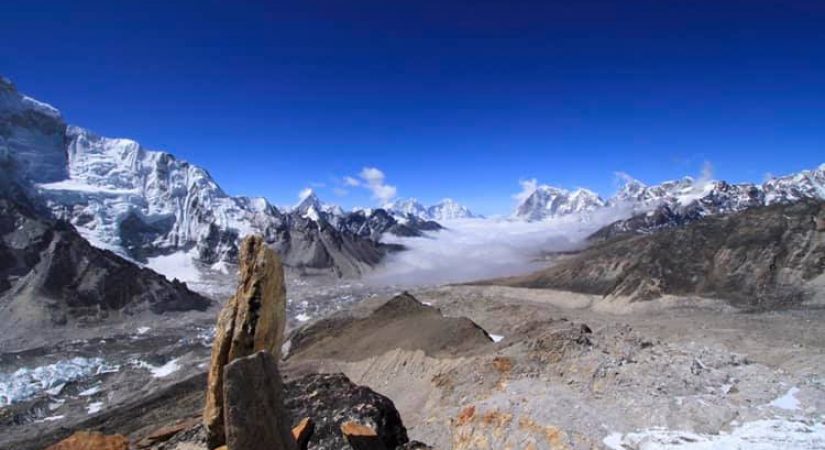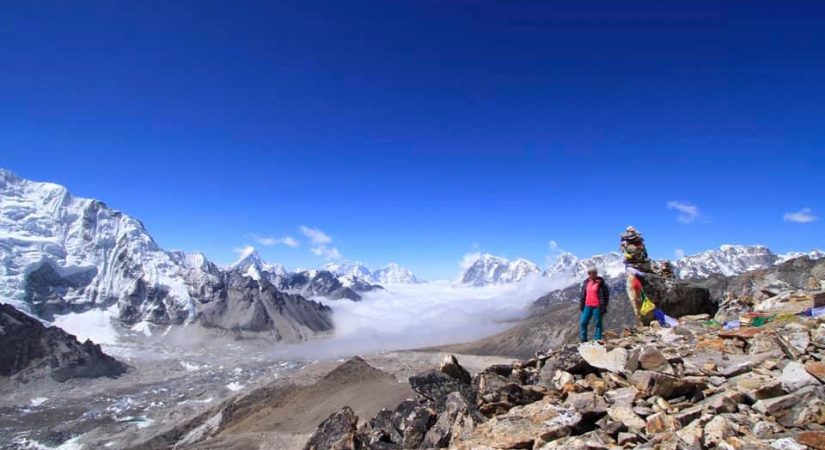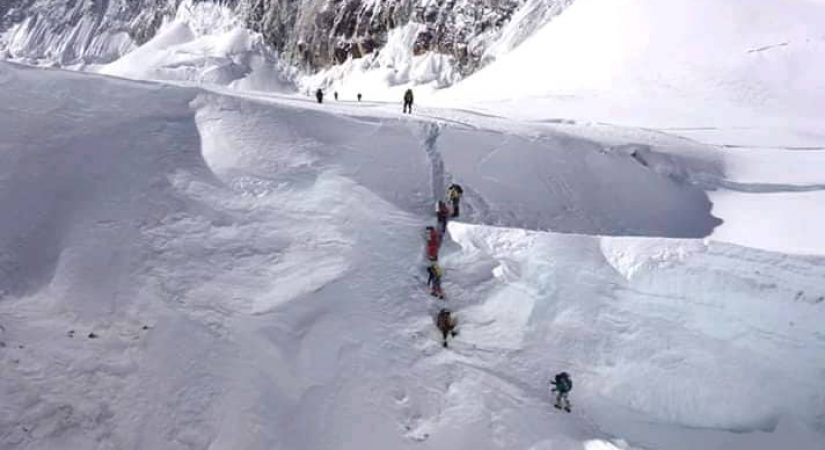2-12 people
Difficult
Tea House / Tent
6,419m/21,055ft
B / L / D
Tourist Bus / Jeep
Mar - May & Sept - Nov
Chulu East Peak Climbing is one of the most enthralling adventures that one can venture into. Standing at an elevation of 6,584m, the peak offers mesmerizing views of the Annapurna massif, Manaslu (8163m), Dhaulagiri (8167m), and Tilicho (7134m) among many others. The climb is rather technical in nature and thus requires trekkers with previous experience to take on this challenge. The diversity of this region is so rich that it makes for a truly wonderful experience.
Along the way to Chulu East Peak Climbing you will experience magnificent scenery along the eastern valley of the circuit, following the lush Marsyangdi River valley up into the highlands with staggering mountain views. The summit of Chulu East Peak offers an astonishing panorama of the surrounding peaks and beyond into remote valleys in Nepal and Tibet. Chulu East Peak Climbing is more technically straightforward than nearby Chulu West Peak but does involve glacial crossings and technical equipment. It can be attempted by all comers, even people without mountaineering know-how and experience, and we will brief you on the use of equipment. Still, it will be demanding and should be attempted only by people fit and acclimatized to high elevation.
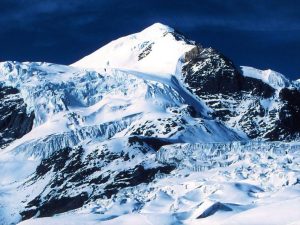
Chulu East towers above the Manang Valley and is part of the Damodar Himal Range. We follow the usual northeast ridge route and establish our base camp on a moraine in an area with spectacular views at around 5,330 m / 17,487 ft. From base camp, most people make it to the summit and return to base camp in a day but we can also establish a higher camp if necessary. When the timing is right we push for the summit along the northeast ridge. Along the way, up and on top of the mountain we enjoy an unforgettable sunrise that lights up the Himalayas with marvelous views of the Annapurna Range, Dhaulagiri (world’s 7th highest peak, the Gangapurna, Tilicho Peak, Manaslu (world’s 8th highest peak) and more! Another peak named Chulu Far East (6,059 mt / 19,879 ft) can be attempted from this route.
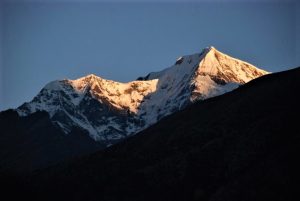
Chulu East Peak Climbing includes camping and is a fully supported trip. You carry only a light pack, and we will arrange a crew of porters and sometimes mules to transport provisions and gear, including food and a dining tent, tables, chairs, a toilet tent, and personal sleeping tents. Our skilled chef will provide the day’s meals and in the evening we will enjoy a magnificent camp under the stars, surrounded by the Himalayas and jaw-dropping surroundings while we enjoy supper and a warm drink.
Trip Outline
Day 01: Drive Kathmandu to Syange/Jagat [1100m/3608 ft]: 8 - 10 hrs
Day 02: Trek Syange/Jagat to Dharapani [1,960m/6,430ft]: 7 - 8 hrs
Day 03: Dharapani-Chame [2,710m/8,891ft]: 6 - 7 hrs
Day 04: Chame- Pisang [3,300m/10824ft]: 5 - 6 hrs
Day 05: Upper Pisang-Manang [3,500m/11,482ft]: 6 - 7 hrs
Day 06: Manang: Rest
Day 07: Manang to Leder [4200m/13,776ft]: 4 - 5 hrs
Day 08: Leder to Chulu West Base Camp [4900m/16,072ft]: 4 - 5 hr
Day 09: Chulu East base camp to camp I [5100m/16,728ft]: 4 - 5 hrs
Day 10: Rest & Acclimatization at Camp I
Day 11: Camp I to Camp II [5,530m/18,143ft]: 4 - 5 hrs
Day 12: Summit Chulu East [6419m/21,055ft] and back to Camp I: 9 - 10 hrs
Day 13: Camp I to Leder: 5 - 6 hrs
Day 14: Contingency Day
Day 15: Leder to Thorong Phedi [4450m/14,596ft]: 3 - 4 hrs
Day 16: Thorong Phedi - Thorong Pass [5416m/17,765ft] - Muktinath [3,800/12,467ft]-Jomsom [2,715m/8,910ft]: 7 - 8 hrs trek and 2 hrs drive
Day 17: Jomsom to Pokhara by bus
Day 18: Drive back to Kathmandu: 6 - 7 hrs
What's included?
- All domestic flights.
- Trekker’s Information Management System(TIMS) card
- All governmental procedure fees, permits and local taxes.
- Full day guided sightseeing tour in Kathmandu.
- All meals and accommodation throughout the trek.
- An experienced English speaking trekking guide possessing valid license issued by the government of Nepal.
- Highly experienced trekking staffs.
- Travel and rescue arrangements.
- Farewell dinner at a typical Nepalese restaurant.
What's not included?
- Visa fees/ international airfare to and from Kathmandu
- Travel / medical insurance and emergency evacuation cost.
- Hot and cold shower, battery recharge during Everest base camp trek.
- Personal expenses phone calls, bar bills, extra porters, beverages etc.
- Personal Everest base camp trekking equipments/gears.
- Tips for guides, porters and drivers.
- All others expenses not mentioned in “Trip Cost Includes” section.

